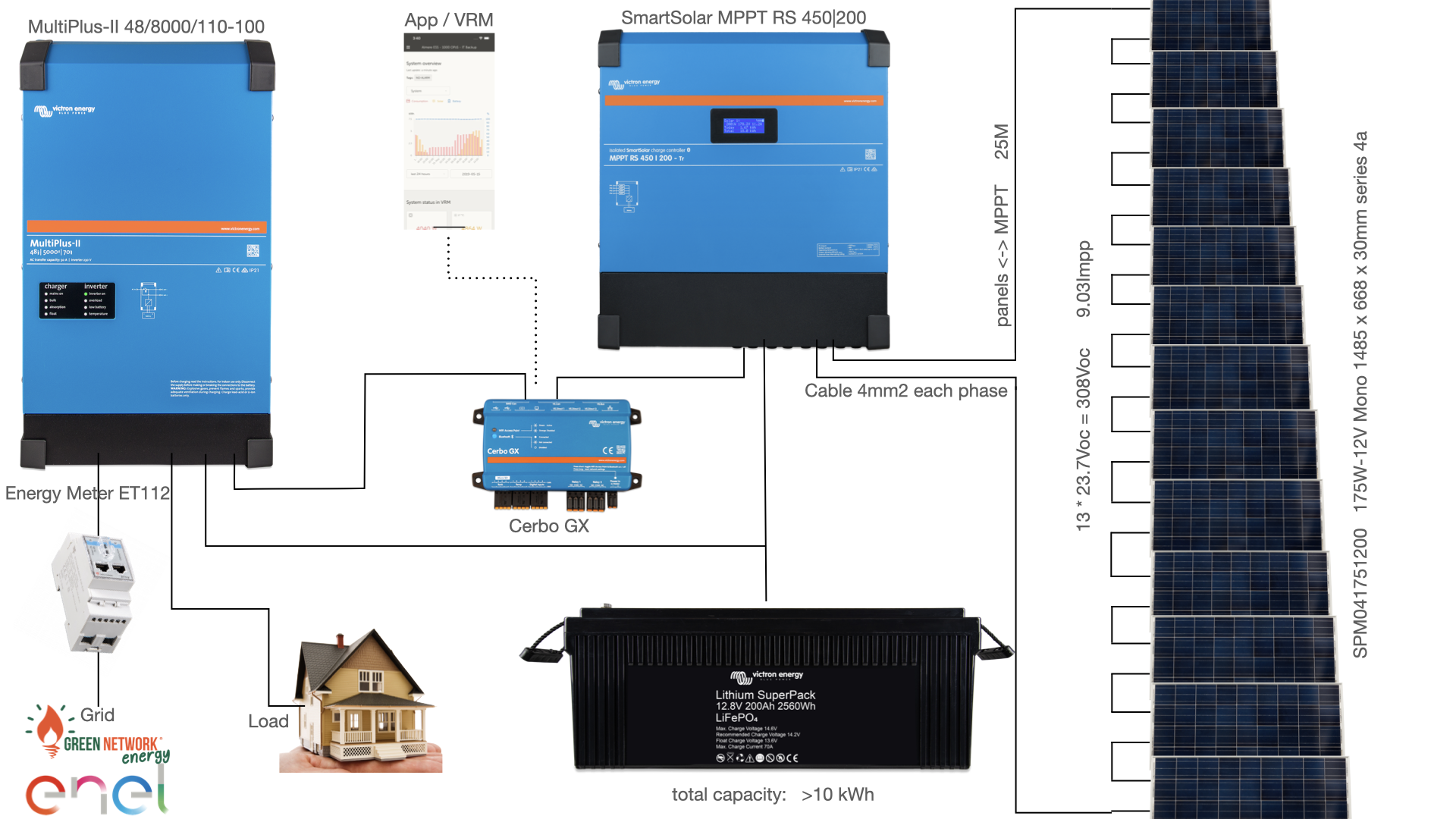Newbie here. Setup for summer home in Sardinia/Italy. The house is in use 4m/y Jun-Sep. No, there is no airconditioning, it's designed to stay fresh under the sun.
After asking a dozen installers and getting the same standard answer I decided to do it myself.
Here's the setup:
- Installation is at 39°06'34.2"N 8°18'28.5"E with panels at 22º incline to South 178º; space for 13x 175W PV panels = 2275W; blue sky 99% of the summer, no shadows across the day.
- Running 24/7: 3 fridges 350W/h; solar water heater circ pump 20W/h; water pump 25W/h; WiFi, netowork 150 W/h ≈ 600 W/h
- During the day: w. machine 800Wh; 1 dish w. 800Wh; vacuum 1500Wh; Iron 2000Wh ≈ 5KWh
- At Night: quiet night 8kWh; party night (¼) 25kWh (mostly due to oven, induction, teppaniaki, frier, steamer, which are all electric - gaggenau 200 series)
- Consider the entire kitchen at work with other loads will be >7kW and if all appliances cycle together it would be close to 10kW but that's unlikely. The grid counter is a 6KVA (I believe that's an 8kVA peak) and it does jump when everyone is active in the kitchen and the oven is in use.
The grid works ok as long as it does not rain. The objective of this PV system is to make this house completely selfsufficient. Eventually we will add more PV panels or a wind turbine to provide more services like desalination of water for irrigation.
The current goal is to never use the grid, if occasionally during major peaks of usage: IF batteries <20% & PV not producing & load >nn kW THEN use grid
During the winter, when the house is closed, only standby consumption for the network is present and all the production can be sent out to the grid and keeping the batteries charged.
So, after reading several spec sheets and watching some great videos, I came up with this. I would be immensely grateful if you have a moment to validate this as it probably not far from feasible, but surely off by a lot. Thank you!!


